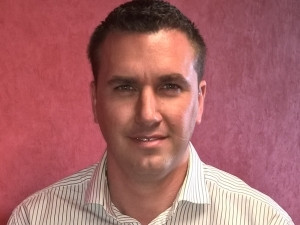
Wian Swiegers, solution architect at EOH Technology Solutions, shares his insights into how contact centres have changed.
"Historically, a contact centre was based on a physical phone call from a client to a company, but that has evolved into the modern contact centre, which incorporates voice, video chat and social media. For example, you can now set up [Cisco] SocialMiner to mine info from social media sites like Facebook and Twitter. A team is assigned to social media on a queue and they get that info, where there is a complaint on Twitter, and can respond directly, immediately to the end-user."
This, Swiegers says, enables the company to give better service to its customers, even without them phoning into the contact centre.
"These days, a user can log onto the Web site using Webchat and make a contact call via a pop-up that is manned by a "new promotions team". If a user logs on to that promotional site, a pop-up alerts the relevant team and they introduce themselves and offer to help. From there, the user can interact with the contact centre agent, can call the customer back, and the like. These things weren't even considered possible in the early days of call centres," Swiegers explains.
He was recently involved in an implementation at a large retailer, using Cisco Unified Communications Business Edition 6000, a solution that caters for mid-market customers, with 1 000 users and up to 100 contact centre agents.
"In this family, we have done unified communications (including voicemail, IM presence as well as SocialMiner), with workforce optimisation, quality management and recording. We were the first organisation to implement the full suite for customers in SA."
He suggests that, before implementation, companies looking to upgrade their contact centres do their planning. "The business needs to decide what they want to offer their customers. Is it inbound calling or outbound calling or Webchat or quality management or workforce optimisation or social media integration or inbound e-mails or all of the above. This will allow you to assign different queues and allocate the people who have the correct skills to each queue. Decide on what you want to offer, what you want to use now, and then start small and grow," Swiegers suggests.
While the technology's use case and proof of concept have been around for a while, Swiegers believes companies underestimate the upskilling involved in changing over a call centre to a contact centre.
"The problem is getting the call centre agents skilled to be able to handle all the different medias. A guy, who is used to taking calls, now has to do Webchat or respond to e-mails. It becomes a mind shift because a contact centre is not about receiving calls anymore," he says.
Training is available to assist agents in managing the change, and Swiegers believes companies have an opportunity to change how their contact centre staff functions daily. "Upskilling individual agents is not really difficult, because everything is Web-based. It does, however, require a certain level of literacy. And with social media, you need a person who can look through the info and see what is being said about the company. Normally that would be the marketing department, which uses the information to craft a message or align their business model differently to suit the customers' needs better."
Ultimately, though, it's about consumers, says Swiegers. "It is about the guys that are using the service and using these mediums - you can see what your customers are looking for and can align your business with their needs. And that delivers to your bottom line."
Share